Page IV – BORDERING
Page IV – BORDERING: Border conditions
”Securitization of migration is considered to be a ’transversal political technology’ used by actors/institutions to foster a sense of public threat and to affirm their role as providers of security”
D. Bigo 2002
The edges of Europe
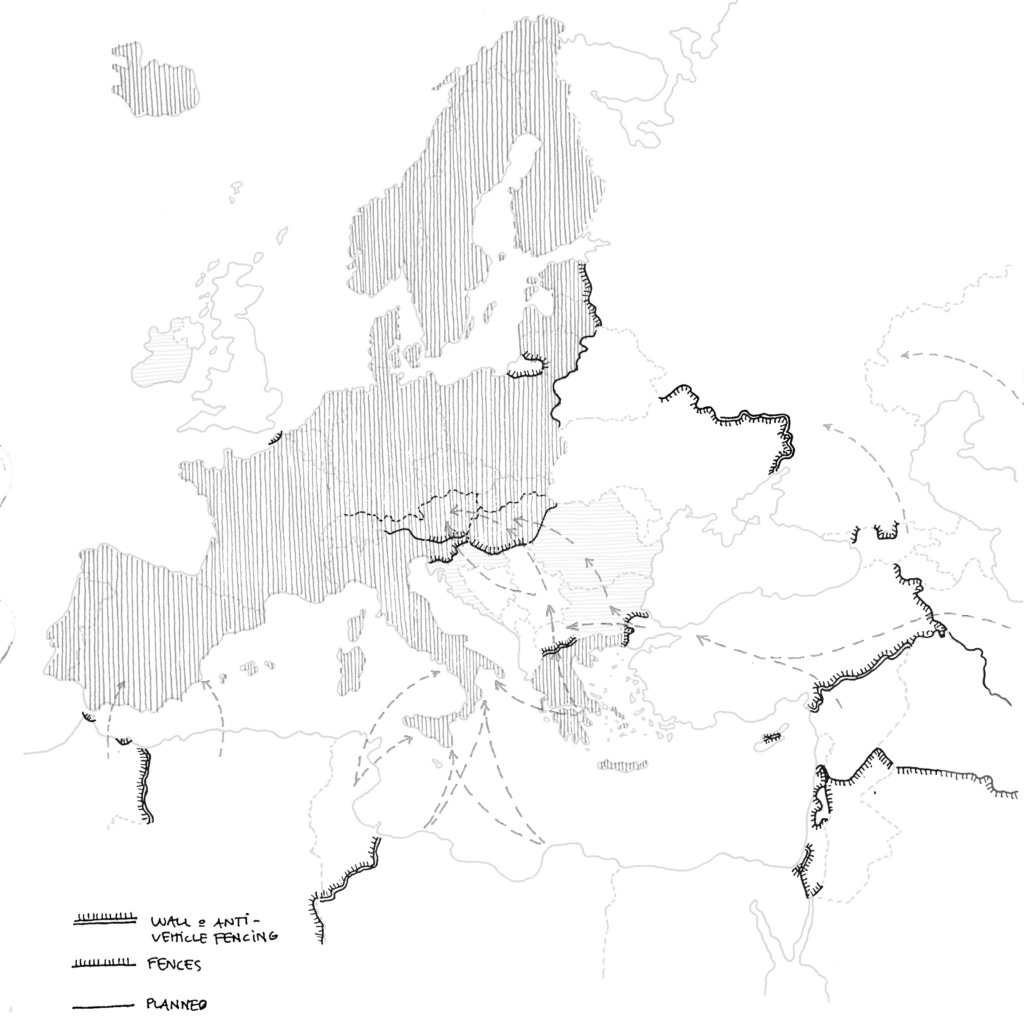
Mapping of Europe’s external border conditions
Researching and documenting the external border conditions of the European Union, on three different scales. Different levels of border infrastructure is uncovered in each iteration.
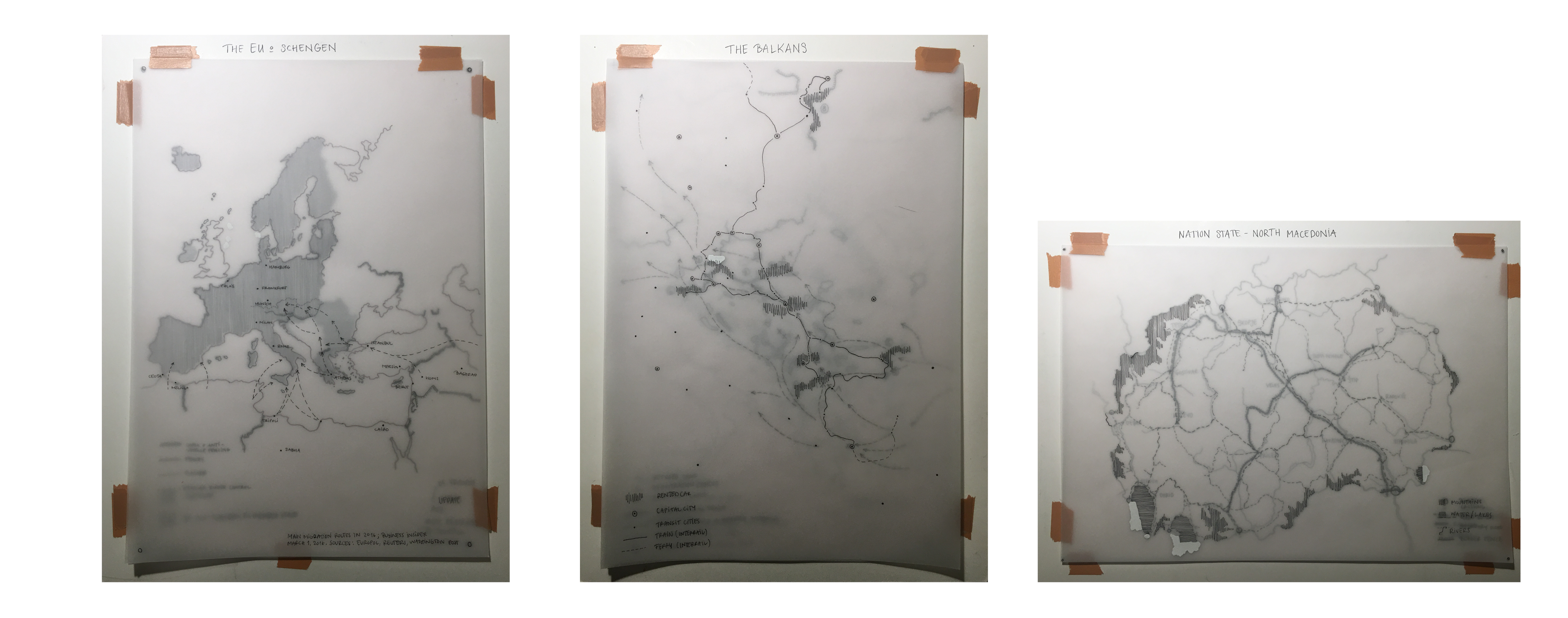
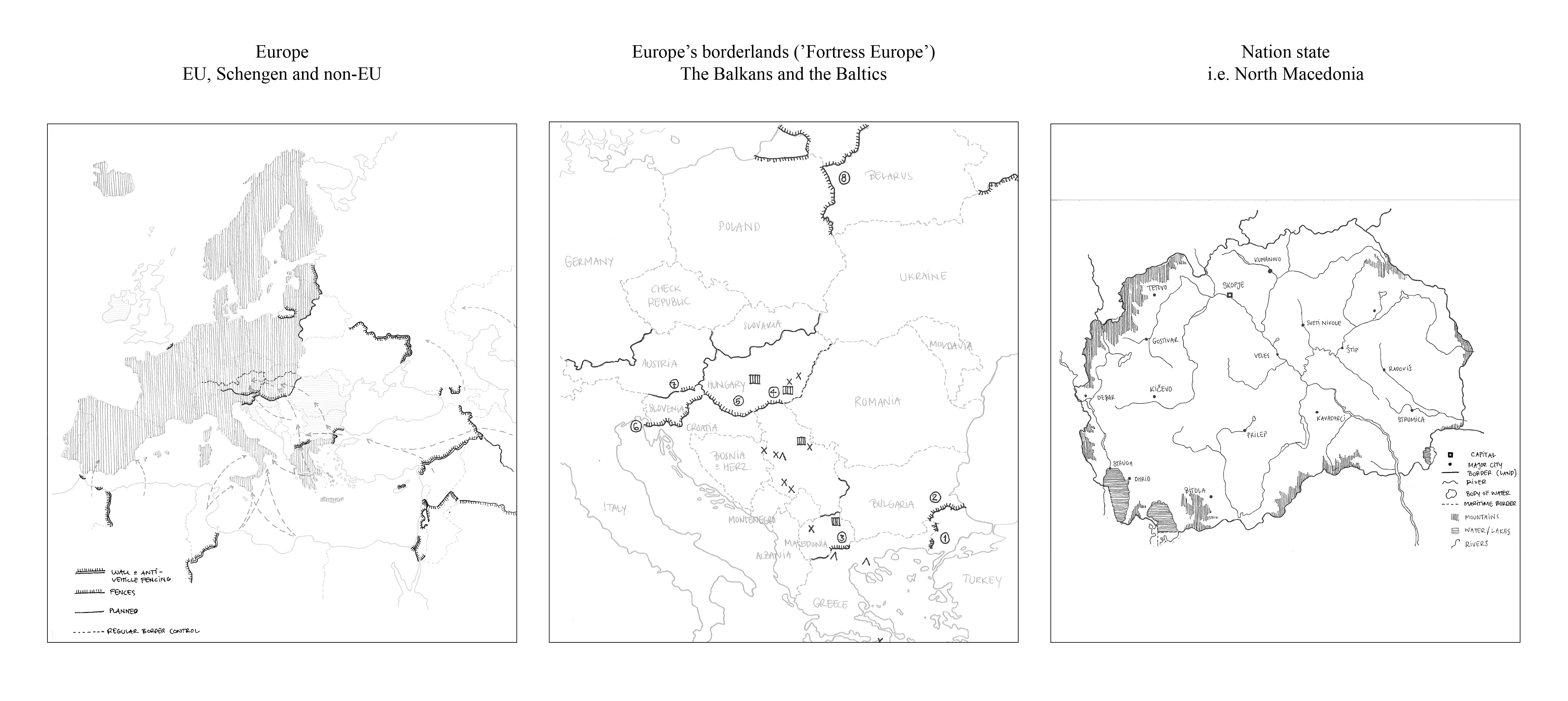
EU/Schengen administrative region and buffer zone:
Border infrastructure and processes such as walls, fences, intensity of border controls and policing and the distribution of Frontex officials (the European border and coast guard agency) operate on this level. Other dynamics at play are EU policies of border externalisation policy, such as the stationing of Frontex personnel on third-country soil and the financing of surveillance technology to buffer states such as Ukraine and Turkey.
Direct EU/non EU borderland – the Balkans:
A zoom-in to this level reveals humanitarian border infrastructure such as registration centres, refugee camps, hotspots and detention centres. The infrastructure on this level is directly affected by that on the EU/Schengen level, as for instance the erection of fences results in the necessity of makeshift camps and aid facilities. On this level the border also facilitates other kinds of architecture that come as a result of the EU/non-EU dynamic, such as casinos, brothels, duty free shops and gas stations.
The sovereign state – North Macedonia:
The border as outer boundary for the operations of the sovereign is both obvious and difficult to pin-point. Boundaries between states have developed over the history, often with roots in geographical advantages to securitization; it is harder for ones territory to be invaded if you’re surrounded by mountains, rivers or other bodies of water on all sides. On this level one can see indications of the border also in administrative differences between nation states, such as differences in plots of land in the agricultural landscape or policies on deforestation.
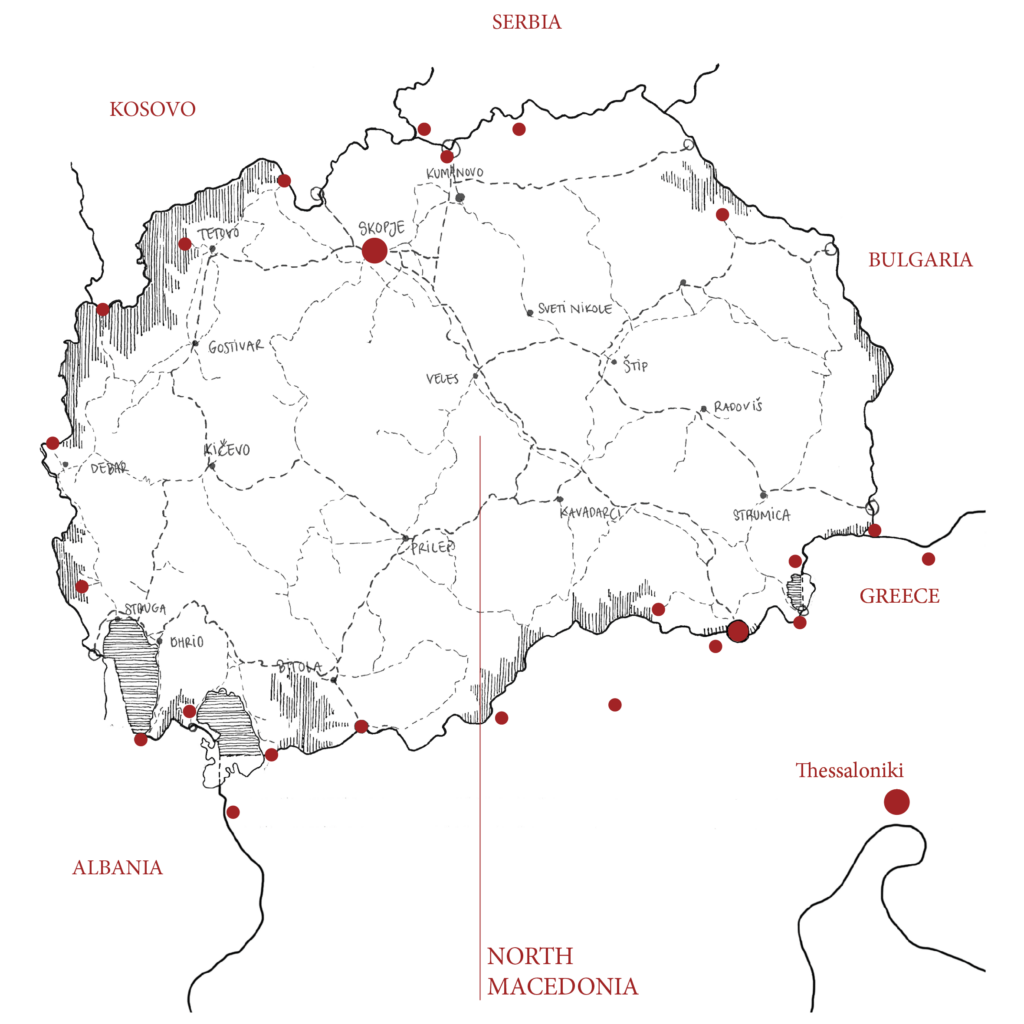
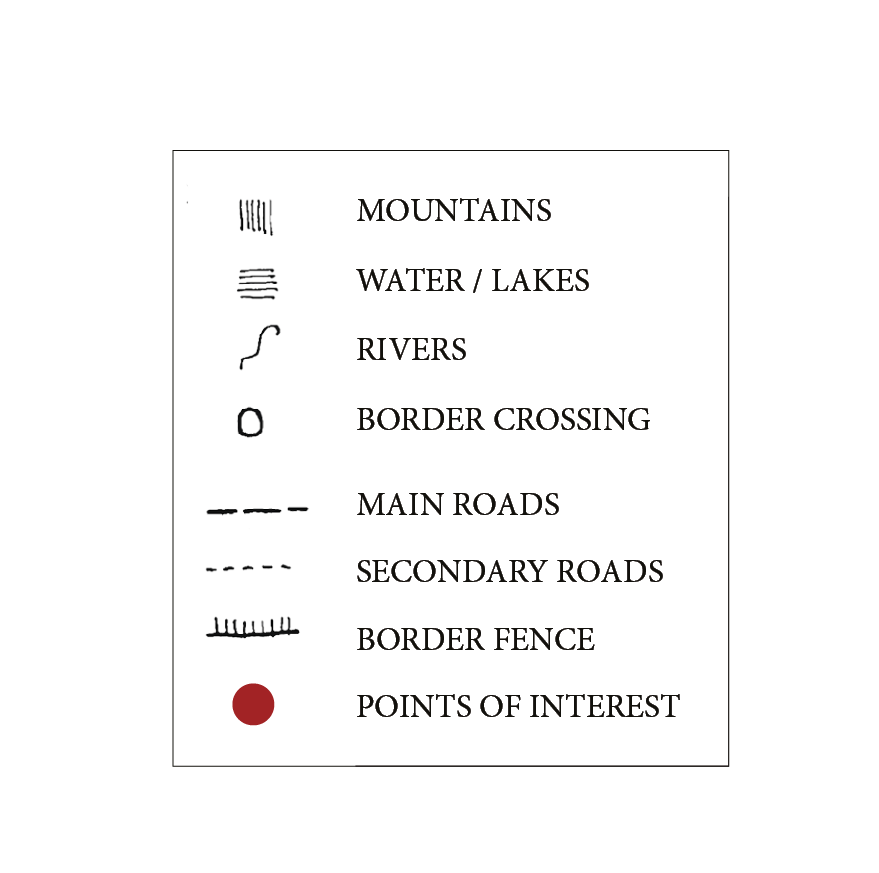
”The Former Yugoslav Republic of Macedonia (FYROM) has been an important transit country along the Balkan migration route, which has made it a critical country to European migration policy and debate. The EU and FRONTEX have pressured the country to halt migration flows. It currently uses one main detention facility, euphemistically labelled the “Reception Centre for Foreigners,” as well as ad hoc “transit” camps along its borders.”
Global Detention Project (June 2017)